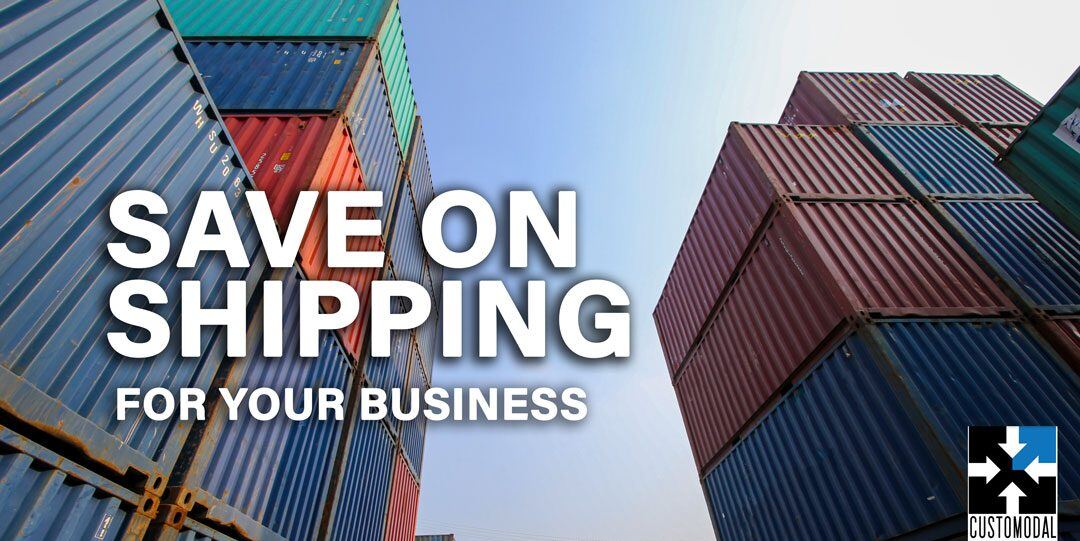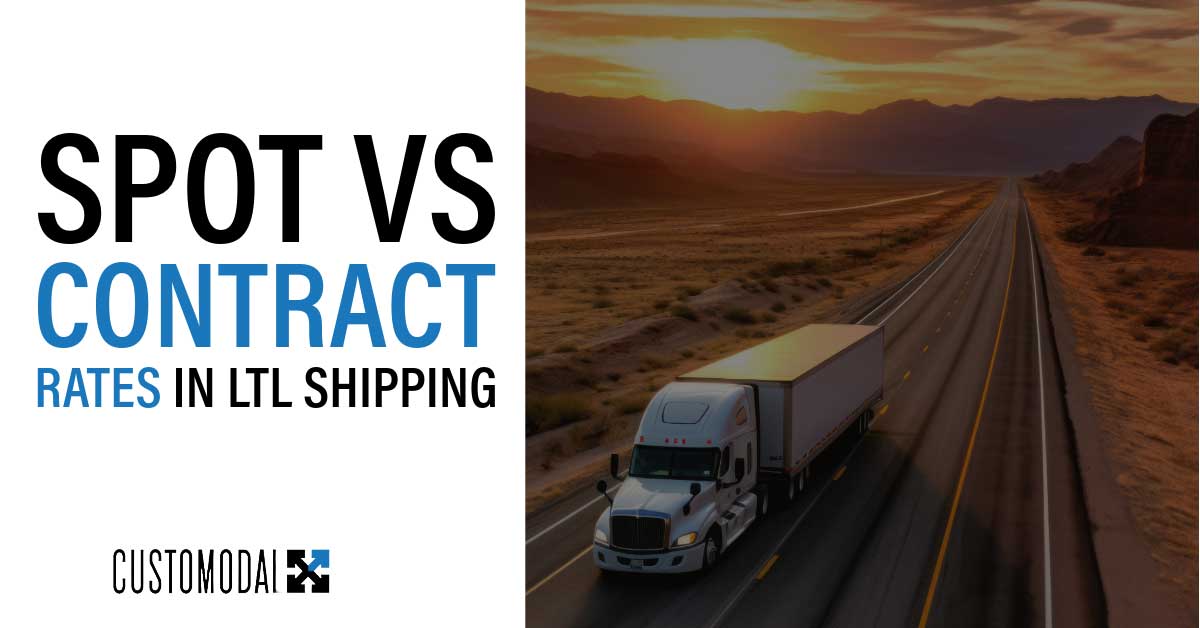
It doesn’t matter what industry you are in or where your company fits into the supply chain, shipping costs are almost certainly a major consideration when you add up the costs of doing business. Some companies depend entirely on full truckload shipping while others can get by on parcel shipping. But the vast majority of us make use of “less-than-truckload” or LTL freight at some point in the process.
Why is LTL freight so expensive and what can you do to reduce costs? There are a number of factors that have contributed to the cost of doing business for trucking companies. This has led to an increase in the rates that businesses have to pay to ship freight. In addition, there are some unique aspects of LTL that add to the expense. Fortunately, there are options to help control shipping costs.
If your business has always used LTL as part of the process of acquiring materials and delivering products, then you’ve had to deal with a serious case of sticker shock at some point. The truth is that all shipping options have become more expensive. Finding the most cost-effective option is crucial to your bottom line but it can be complicated. Read on to learn about the problem and potential solutions.
What Makes Shipping and LTL Freight so Expensive?
The two most common types of freight shipping in the supply chain of every industry are less-than-truckload and full truckload. A full truckload is typically considered to be either 24 pallets or 42,500 lbs. of freight. Anytime you need to ship materials that fall short of that weight or size, LTL is an option. LTL is generally more expensive on a per unit, per mile basis. But finding the most cost-efficient shipping option for your businesses’ specific needs is a bit more complicated than that.
What Determines Cost Per Mile for Shipping Companies?
Just like any other business, the trucking companies that we turn to for logistics are in business to make money. Shipping freight has operational costs for them and as those costs go up, they need to increase the rates that they charge us in order to maintain their profitability. It’s important to understand what these costs are so that we can anticipate future changes to our shipping costs.
Of course, trucking companies have to purchase trucks and trailers to be able to move freight in the first place. Purchasing or leasing equipment and securing the necessary licenses and certifications are a big part of the start-up cost for trucking companies and replacing aging equipment contributes to ongoing operational costs.
In addition to equipment costs, trucking companies have to pay tolls, taxes, registration, and insurance. They also have to pay hourly wages or salaries to the administrative staff who manage the clerical and managerial aspects of getting freight moved from one place to another. All of these costs contribute to the baseline operational costs of businesses in the trucking industry.
Trucking companies have to clear all of the costs that we’ve mentioned so far just to break even on their own ledger—and that’s before you factor in any of the costs of consumable supplies and materials that are essential to their operation. These costs include driver compensation, fuel, and maintenance. In the trucking industry, these costs are called marginal costs.
How Have Marginal Costs Contributed to the Increase in LTL Shipping Costs?
The costs of new equipment are long-term investments that shipping companies make. The costs of fuel, driver compensation, and maintenance are costs that those shipping companies have to pay as they use the equipment to not only pay for the investment but also generate profits. Historically, fuel costs have been the single greatest marginal cost for trucking companies.
While fuel costs remain high for trucking companies, the cost of driver compensation has gone up sharply. This has contributed to a significant increase in the cost of doing business for these companies and they have raised their rates to reflect that increase and maintain their profit margins. Technology helps logistics companies be more efficient on fuel usage and maintenance costs but driver compensation seems poised to continue to increase.
What this means is that businesses should expect the rates that they pay for shipping to continue to go up. Unless there is a dramatic change in the economic fundamentals of the trucking industry, the cost of shipping goods will remain high and go up over time. The fact that driver compensation has been a significant factor in the recent rise in LTL shipping rates is a major reason LTL freight is so expensive.
That is because the increase in driver compensation costs has been driven by a serious shortage of drivers. Since there aren’t enough drivers to fill all of the jobs in the trucking industry, driver compensation has gone up to attract qualified workers. Unless this trend is reversed, it is unlikely that driver compensation will go down or that we will see a corresponding drop in LTL freight costs.
The Law of Supply and Demand for Shipping Companies
Because there are too few drivers to complete the jobs that the trucking industry needs to do, the law of supply and demand dictates that companies will pay more to get drivers. This matters for us because the increased rates that these companies pay are ultimately passed on to us so that trucking companies can maintain profit margins.
The fact that drivers are in short supply is a problem for trucking companies but it is a problem that gets compounded for their clients. The trucking companies pay more for drivers and pass those costs on to their customers. But trucking companies can actually charge more for their services because the driver shortage means that the supply of freight shipping capacity falls short of the demand in the market.
Being on the losing end of the law of supply and demand two times over is a difficult position to be in for companies that rely on shipping partners as a central pillar of their supply chain. It means that there is very little room for price breaks in one area and very little incentive to provide them with another. Therefore it’s important that companies take advantage of every opportunity they have to control their shipping costs.
What Makes Shipping LTL Freight So Expensive?
The cost of an LTL load is going to be less than the cost of a full truckload when you compare them directly. But when you break those costs down to a per unit, per mile basis you’re likely to find that you paid more for the LTL load. There are several factors that contribute to this increased cost. For some companies that means that it makes more sense to go to full load shipping but that isn’t an option for everyone.
Fuel Consumption
The nature of LTL shipping is such that it involves a higher rate of fuel consumption for trucking companies. They are going to pass those costs on to their customers whenever they can so that they maintain their profit margins. Because both loading and unloading involve multiple stops for an LTL load, there is going to be more idling and a higher rate of stop and start driving.
In full truckload shipping, the trucking company gets to hook up to a load, put it on the highway and drive until they reach the destination. The only stops are for the driver’s hours-of-service breaks and for refueling and meals. That means that the truck is burning all of its fuel for the purpose of covering the miles between origin and destination. It’s the most efficient fuel usage possible for the trucking company.
But, when you ship less than a truckload, the truck and trucker need to sit still while your load is loaded. If you share the cargo space with other loads then the truck and trucker need to sit still while those other loads are loaded, which means more time and fuel usage. If you have the load shipped with empty space than the trucking company needs to roll their cost per mile into the rate for your load.
The High Cost of High Touch Loads
LTL shipping is less fuel-efficient but it is also less efficient for trucking companies because of all of the time that is lost to the multiple stops and multiple touches for the cargo. The costs of these inefficiencies can be traced to numerous sources that contribute to a significant total increase in costs.
The insurance rates are higher for LTL loads than they are for full truckloads. This reflects the increased number of touches that come with the territory for LTL shippers. Driver compensation tends to be different for LTL shipping than for full truckloads as well.
Since drivers know that they are going to spend more time sitting still during the unloading process when they haul LTL loads, they often demand a higher rate per mile or an hourly wage that they are paid when waiting to be unloaded. All of this gets wrapped into the baseline costs of an LTL load before the shipping company calculates the profit margin that they build into the rate they charge the customer.
Can You Reduce the Costs of LTL Shipping?
As we’ve discussed, there is little hope that shipping rates will go down anytime soon. The combination of increased costs for trucking companies and the law of supply and demand mean that shippers will simply turn down loads that don’t pay the rates they decide to charge. In addition to that, there are more costs associated with LTL that can be avoided unless shippers change the way they approach the negotiation.
Freight consolidation is an umbrella term that is used to describe a number of different shipping practices that deliver some of the savings enjoyed by full truckload shippers to businesses that need LTL loads. 3PL, TPL, or Third-Party Logistics is a term that is used to describe businesses that go above and beyond the level of service that businesses have traditionally gotten from direct negotiations with trucking companies.
By using software and services to accomplish the goal of freight consolidation, businesses are able to manage the complex job of finding shipping options that reduce their costs and get their products delivered on the schedule that they need.
Freight Consolidation
One of the reasons that LTL shipping costs businesses more on a per unit, per mile basis is that trucking companies charge each client the surcharges and service charges that are associated with shipping a load. This can include fuel surcharges, tolls, and more. When shippers combine their partial loads to make a full truckload, they may be able to split a single charge between them rather than each paying the full charge.
Of course, it can get very complicated working on your own to find partners to work with on making a combined load. For that reason, many businesses choose to work with freight brokers who do the work for them for a fee. This means that they can focus on their core business while still enjoying the cost savings available to businesses that ship full truckloads.

Transportation Management Systems
A Transportation Management System (TMS) is a software solution that can streamline your entire shipping process. Companies that have taken advantage of this useful tool have seen significant retu
rns on their investment in the form of lower shipping costs, decreased chargeback rates, and greater flexibility in responding to customer demands.
A TMS can deliver improved cost-effectiveness and efficiency for both inbound and outbound logistics for a business. In addition to managing a diversified and dispersed shipping process through a single software solution, a TMS can help to automate reporting and tracking in ways that reduce paperwork and man hours.
Third-Party Logistics
3PL companies are in the business of delivering customized shipping solutions to their customers and clients. This can mean anything from a dedicated account manager who acts as a liaison for your company’s shipping department to a dedicated service offering that you design together. Depending on the precise nature of your shipping needs, the type of 3PL service you need will differ.
When the software solutions of a TMS aren’t enough to free your team up to focus on your core mission, a third-party logistics partner can take on the complex demands of your shipping needs. It will be their job to make sure that you are getting the most effective and cost-efficient shipping services available while still delivering in ways that meet your customers’ expectations.
Sometimes the best way to get better results from your team is to allow them to focus on what they do best and leave other essential functions to experts that you partner with. The money that you’ll pay your partner as a fee for their services might turn out to be a drop in the bucket compared to the increase in productivity and effectiveness that you see from your team’s work on your core business.
Parcel Hundred Weight Programs
Another option that businesses should consider if they are looking to get away from the high cost of LTL shipping is Parcel Hundred Weight Programs. There are positives and negatives to this option but for some businesses, it will turn out to be an ideal solution to their shipping needs. It can be difficult to draw a direct per unit, per mile comparison between LTL and Parcel Hundred Weight Programs but it’s worth the work.
The biggest upside of Hundred Weight Programs is that it brings more potential partners to the table. That means more total options available to your business at the end of the day. But when you work with these partners there are some downsides that you should consider when comparing this option with the others that are out there.
At the end of the day, the most important thing for businesses to know about shipping costs is that more options are a good thing. However, each option requires you to do your homework in order to know what you need to know. It doesn’t take long for all of this to add up to an overwhelming process to manage when you’re trying to balance it with your core business mission. That’s why many businesses choose to work with a 3PL that is focused solely on getting it right.
Conclusion
LTL shipping is an essential shipping service to businesses of all sizes and in every industry. As the economic landscape of the trucking industry changes, the costs of traditional LTL shipping are likely to become even more challenging to your business’s bottom line. Fortunately, there are a lot of tools available to your business to try to get a better deal on your shipping needs.
Freight consolidation is a winning strategy. It takes a proactive approach to secure savings for your business rather than letting trucking companies pass on a disproportionate share of the costs associated with shipping your load. There is technology to make freight consolidation manageable for your staff. If that doesn’t work for your business, you can partner with an expert who focuses solely on the job of getting that right for your business.



